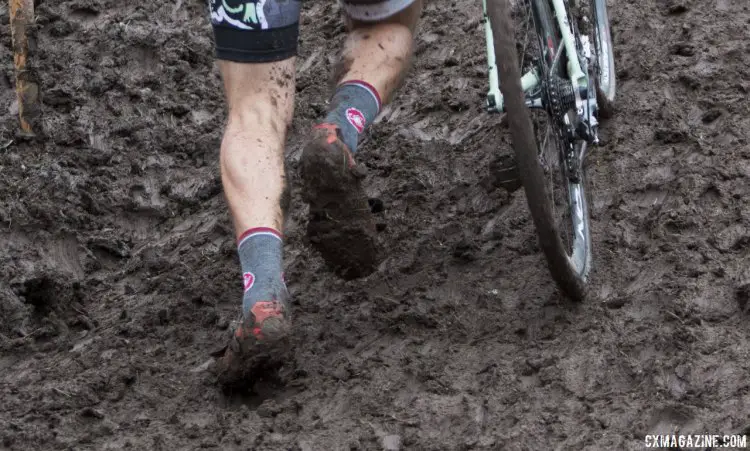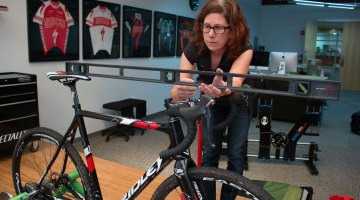Forget what you know about preparing to run in cyclocross: If you are pulling out your sneakers and jogging only two weeks before the season begins, you are losing plenty of free speed. Although those with a history of knee trouble might want to consult an expert first, becoming a more efficient runner will prevent you from feeling drained during a hike through the sand, on a run-up or against a muddy, unrideable off-camber. Don’t just take our word for it: Scott Funston, a 2015 Junior Cyclocross National Champion, considers himself a cyclist second, and a cross-country runner first.
For today’s Technique Tuesday, we offer an excerpt from Kenneth Lundgren’s training column from Issue 28, which will be hitting the shelves soon. For the full article, including detailed workouts and getting more cyclocross specific throughout the summer, be sure to order your back-copy of Issue 28 (also available soon here and on iTunes).
by Kenneth Lundgren, Coach and Owner of Elite Endurance
To maximize your strengths, you must minimize your weaknesses: this is one of the most important tips I give athletes, and I believe there is no better time to work on weaknesses than in the offseason.
In cyclocross, you’ve seen many strong cyclists bolt off the front only to cause bottlenecks in the turns or fall behind through the run-ups and the sand- pits, never to be seen near the front for the rest of the race. Although cyclocross courses have become more ride-oriented over the years, racers must prepare for all aspects of the cyclocross equation: the pedaling performance on the bike, the skills training on the bike, and the specific preparation carrying the bike: running.
Running is arguably the primary weakness I immediately perceive in the cyclocross athletes I coach: from national and state champions to beginners looking to rise through the ranks. With training, the simple goal is to breed a cyclocross racer who is not only adaptable to certain conditions, but who has prepared for them as well.
Natural runners take longer strides, and this is something cyclists must relearn, because they are accustomed to pedaling in small circles: their legs move quickly in a short, controlled motion. Cyclists are not used to carrying their body weight, nor are they comfortable with slower, lumbering leg movements. From January through July, consider building a true running foundation, and include one run that focuses on form in your weekly program. Make one recovery workout a short, 30-minute, low-intensity jog. You may even want to consider building up to this if you have no running base, starting with a 10 to 15-minute jog and working your way up.
Ensuring the proper running form is critical, as it offers free speed with less exertion. In cyclocross, when racers fatigue, their biomechanics become sloppy, which means moving slower with more effort. What does this look like in a cyclocross race? Leaning forward while running with a curved back and a bent head, running “heavy,” stomping feet, landing hard, and creating drag as a stride powers down instead of forward.
Instead, one should train for an efficient form: Run “tall,” head up, shoulders back, hips forward. In the beginning, concentrate on light, long strides rather than speed, which you shouldn’t do on a recovery ride in this part of the season, anyway. Think light steps, light feet, arms relaxed and fists moving front-to-back. Feel the momentum propelling you forward with zero wasted motion. As athletes become used to these Form Runs, their stride length increases and leg speed naturally improves. Their bodies begin to master the form; the ankles and knees and hips acclimate to the motion, and the phase of post-run soreness is forever gone.
Although most cyclists might consciously disagree, running provides the athlete with a more balanced year, and can become a fun outlet.
Even with the champion cyclocross racers I coach, this basic running routine remains the same until mid-summer. By mid-July, stop the recovery jogs and inject the cyclocross bike into the equation.
Start doing skills-based ’cross workouts, which include running movements in short five to 15-second increments in the form of dismount-remount repetition and aerobic run-up repeats. While shouldering the bike, whether you grab down tube or top tube, you want to feel in control as you dismount. Lightly hoist the bike onto your shoulder and reach under the down tube, grabbing the right handlebar drop.
Pull the bike tight to you; your helmet won’t smack your saddle while you run in this position, and now you can stay balanced, enabling that all-important free speed.
For training features and plenty of cyclocross and gravel loaded material like the excerpt above, subscribe to our Digital All-Access post (also available here and on iTunes). You can also order a back-copy of Issue 28 here for the rest of this article.





























